|
|||||||||
|
FEATURESThe Muslim Nations of the North-westAnthony Garnaut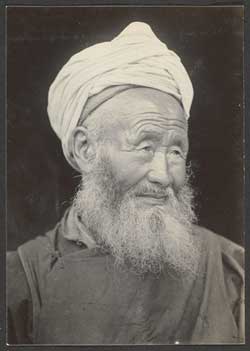 Fig.1 A 92 year-old Salar man. With the exception of Fig.6, all of the illustrations used in this article, along with information given in the captions, have been taken from the photographs of the Rev. Claude L. Pickens collection on Muslims in China, accessible through the Harvard Virtual Library (http://via.harvard.edu). The majority of the photos in this collection, including those shown here, were made during two trips by Pickens through North-west China in the 1930s. One striking characteristic of Muslim ethnography in China is that ethnic distinctions tend to be more coarsely drawn the further one travels eastwards from Moscow. In the Chinese province of Xinjiang, adjacent to the former Soviet countries of Kazakhstan, Kyrghyzstan and Uzbekistan, Muslims constitute seven, predominantly Turkic-speaking ethnic groups. A thousand kilometres further to the east, in the geographic region known as the Gansu Corridor, the established Muslim communities are classified by the Chinese government into only a few minority nationalities. The Muslims in the rest of China, including Tibetan-speaking communities in Yunnan and Mongol-speaking groups in Inner Mongolia, are all officially classified as the Hui nationality, or Chinese-speaking Muslims. (Figs.1&2) 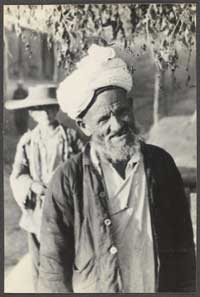 Fig.2 An elderly Dongxiang man. The Muslim population of the Gansu Corridor is a little over 5 million, three quarters of whom are classified as Hui. Most of the Hui Muslim populations live either in the Ningxia region, to the north-east of the Gansu Corridor, or in the districts of Xining and Linxia situated along its southern edge. The latter district, divided by deep valleys that have been carved into the Tibetan massif by the headwaters of the Yellow River, is home to the three nationalities that make up the remaining quarter of the Muslim population of the Gansu Corridor. The Dongxiang nationality is the largest of the three, with a population totalling half a million concentrated in Dongxiang county, east of the town of Linxia that is the leading Muslim cultural centre of the Gansu Corridor (Dongxiang 东乡 literally means the 'villages to the east' of Linxia). The Salar nationality comprises a little over a hundred thousand people, most of whom live either in or around Xunhua county, midway between Linxia and the Qinghai provincial capital of Xining. The Bao'an nationality has a population of twenty thousand (up from only 5,000 in 1949), who predominantly live in Jishishan county to the north-west of Linxia. (Figs. 3, 4&5) 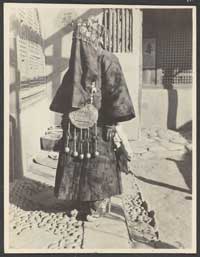 Fig.3 A Salar bride. 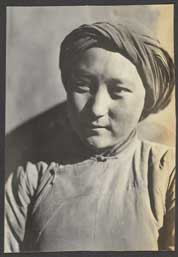 Fig.4 A young Salar woman. 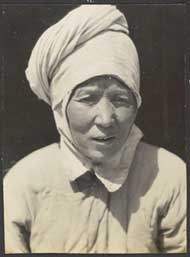 Fig.5 A middle-aged Salar woman.
Fig.5 A middle-aged Salar woman.Each of these three nationalities has its own spoken language, classified by linguists as belonging to the Altaic group, which includes the many Mongol and Turkic dialects. All three languages have been heavily influenced in both grammar and vocabulary by Chinese and Tibetan, and today young people of all three nationalities tend to be as conversant in Chinese as they are in their native tongue. Ethnic ClassificationThe task of identifying and documenting the ethnic groups that together form the Chinese nation was written into the inaugural five-year plan of the new People's Repubic, implemented between 1953 and 1957. During this period, teams of ethnographers were sent out to the mountains to identify communities that considered themselves to be ethnically distinct, and to accumulate evidence to determine whether or not they in fact constituted a distinct ethnic group. The criteria applied to determine ethnic status were based on the Stalinist nationalities model, whereby the people of a distinct nationality had to share four basic characteristics: a common economic way of life; a common language; a common homeland; and a common cultural outlook, or what would be described in plain English as a common identity. At the end of the five-year plan, 54 minority nationalities were identified as such alongside the majority Han nationality. One further minority group was added to the list in 1979. Ethnography, as understood in the Soviet practice of the science, was virtually unknown in China when the great ethnic classification project commenced in 1953. In order to produce reliable ethnographic documentation in the limited time-frame of the five-year plan, Chinese ethnographers relied heavily on support from their colleagues in the Soviet Union, who obliged by providing field researchers and access to ethnographic data relating to China that had been accumulated by Russian scientists and explorers from the 1870s onwards. Those ethnic communities that had been the subject of previous Russian and Soviet studies had a natural advantage in producing the documentation required to establish a new ethnic group within the time constraints imposed by the five-year plan. 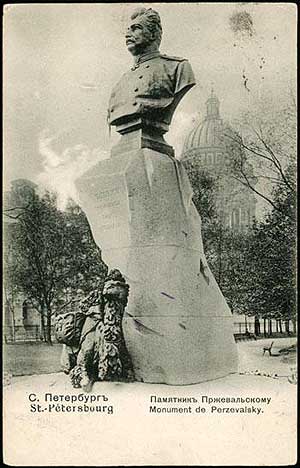 Fig.6 A Russian postcard depicting Nikolai Przhevalski. The first Russian scientist to explore Gansu was the naturalist, explorer and agent of the Russian War Ministry, Count Nikolai Przhevalsky who is best known outside of Russia for discovering and presenting to science the first skin of the rare species of horse that now bears his name. Przhevalsky visited the southern Gansu-Qinghai region on three separate expeditions between 1870 and 1885. His first trip to the region occurred during the tail-end of the Muslim rebellion of the 19th century, and he was on the scene in 1873 when the Qing imperial army recaptured Xining from the Muslim rebels. (Fig. 6) Przhevalsky described in some detail the Salar Muslims, whom he named as Kara-Tanguts or 'Black' Tanguts by virtue of their proximity to the Tangut (i.e., Amdo) Tibetans of northern Qinghai. On his last trip to the region Przhevalsky was accompanied by the anthropologist G.N. Potanin, who produced the region's first ethnographic study on the predominantly-Buddhist, Mongol-speaking group known as Monguors (Chinese: tu zu 土族). Potanin later also conducted an ethnographic study on the Salars. Despite all the Russian, Soviet and Chinese ethnographic work that subsequently has been produced on the Muslim nationalities of southern Gansu, they continue to exist in an uneasy relationship to each of Stalin's four pillars of nationhood. Economic NationhoodSoviet ethnography, being grounded in the principles of dialectical materialism, placed economic factors rather than 'spiritual' factors such as religion at the centre of their understanding of ethnicity. According to economic criteria, all of the Muslim ethnic groups of Gansu are readily distinguishable from their Han Chinese, Mongol and Tibetan neighbours. Prior to the arrival of the industrial economy in Gansu in the 1930s, Muslims monopolised the dangerous long-distance trade, powered by sheepskin raft, donkey, camel or yak, from the market towns of southern Gansu upwards into the Tibetan highlands and downriver to the cities of China Proper. (Figs. 7&8) The menfolk of all four groups often pursued military careers and won a reputation for martial valour or, when their martial qualities were directed against the interests of the state, as formidable bandits. 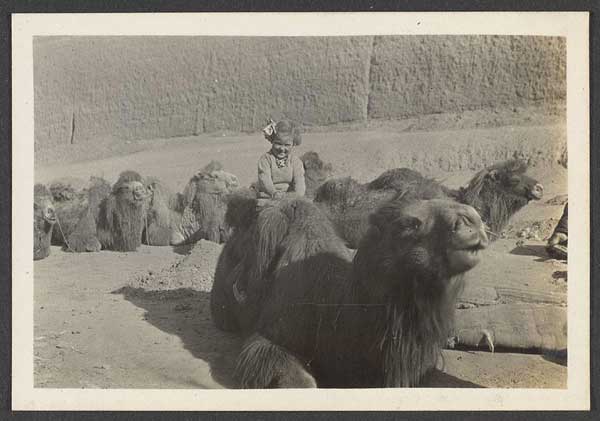 Fig.7 Resting camels run by a Salar trader. The girl shown seated on the camels is the daughter of a member of the China Inland Mission posted in Gansu in the 1930s. While the Muslim nationalities of Gansu tend to be employed in similar exotic sectors of the Chinese economy, there are few economic criteria that can be used reliably to distinguish between the Hui, Dongxiang, Salar and Bao'an nationalities. In any given region, they each engage in similar businesses, often as members of one of the same Sufi religious orders that in the borderlands of southern Gansu also function as collectivised trading associations. 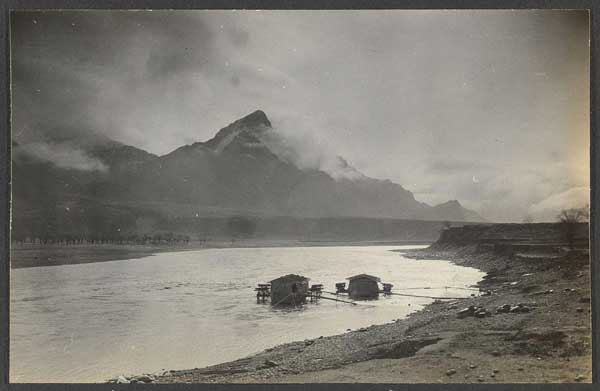 Fig.8 A view out over the Yellow River in the Salar district of southern Gansu. The Salars were famed for transporting goods by raft down the rapids of the headwaters of the Yellow River. Linguistic NationhoodThe Salar, Dongxiang and Bao'an can be conveniently thought of as Turko-Mongolian Muslims who have lived in close proximity to, respectively, Turkish, Mongol and Tibetan peoples. This generalisation is born out with regard to language: Salars can readily make themselves intelligible to Uyghur Muslims in Xinjiang; the Dongxiang do not distinguish between their own language and that of the Monguors; while around 40% of Bao'an vocabulary consists of loan words from Tibetan (this percentage is much less for those Bao'an communities that live furthest away from cultural Tibet). Linguists describe the root of all three languages as being some form of Altaic, with varying degrees of influence from Chinese and Tibetan. However, given that none of these nationalities have an established written literature, and given the intense and diverse contact that its speakers have with members of other linguistic groups, it is difficult to sort one out from another with the degree of precision expected of scientific forms of analysis. The Chinese government has made various efforts to provide these three Muslim nationalities with a written language of their own. In the case of the Dongxiang, the largest of the nationalities concerned here, alternate models for writing in Dongxiang language were proposed by linguists in the 1950s based on Cyrillic and Roman scripts, but neither was officially adopted. In 1980, a different Latin-based writing system was proposed, and a further Arabic-script system in 1985, but again neither of these were adopted. Finally, in 1998, a Dongxiang writing system based on the official Hanyu pinyin system of Mandarin romanization was presented to local government bodies for discussion, and is still being discussed as this article goes to press. Dongxiang Muslims had been writing well before ethno-religious policy cadres set themselves the task of inventing a new writing system. Arabic and Persian were once and still are extensively taught at Islamic schools in Dongxiang communities that, like those run in Salar communities produced many Muslim scholars whose influence spread well beyond Dongxiang county. While Dongxiang people tended to be illiterate in their own language, they preferred to pursue their education by acquiring literacy in the primary languages in which Islamic knowledge is recorded. However, religious and secular texts recorded in the Dongxiang language itself, using a transliteration system based on Arabic-script known as xiaojing (小经, also written xiao'erjin 小尔锦) are still commonly read today, and are known to have existed as far back as the late 17th century. One religious text of literary pretensions, written in the Dongxiang language using xiaojing, is widely read by the Dongxiang followers of the Mufti Sufi order. (Fig.9) 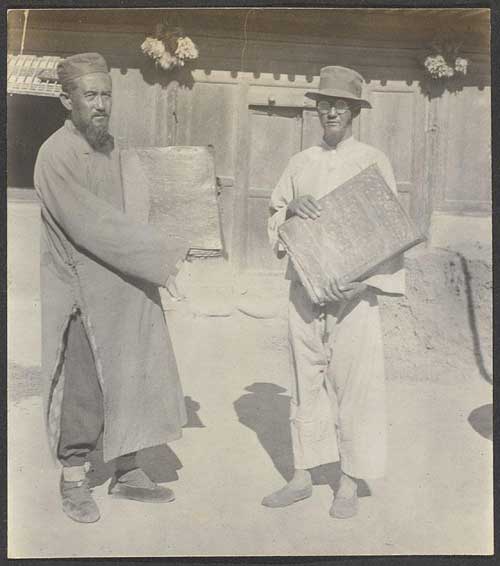 Fig.9 The two volumes of the Salar Quran, copied and illuminated in Central Asia, held up for the photographer by young Salar students. This Quran is now kept under heavy security in a purpose-built building in Xunhua county, and plays a central role in the cultural politics of Salar identity. Despite the widespread usage of an Arabic-based Dongxiang script, the Dongxiang have been encouraged to upgrade to a 'modern' European script, following in the footsteps of most of the Turkic-speaking peoples that live between Central Asia and Turkey. Geographic NationhoodThere is a county, located in the north-west of Linxia district in southern Gansu, that has a rather awkward-sounding Chinese name that translates as 'Jishishan Bao'an-Dongxiang-Salar [Ethnic] Autonomous County'. The first ethnic autonomous administrative entity of the Chinese Communist state was created in the Gansu Corridor during the episode of the Long March known as the Western Advance, a spectacularly disastrous attempt to dash through a Muslim-controlled region in order to establish lines of communication with Soviet Red Army forces. Jishishan autonomous county, established in 1980, was the first county-level multi-ethnic autonomous entity to be established in the People's Republic. The establishment of such an autonomous entity does not signal full political autonomy for the ethnic group or groups concerned, but it does tend to bring a degree of recognition in cultural matters and increased funding for schools that teach in ethnic languages. In some Muslim regions, particularly Xinjiang, the system of ethnic autonomy seems to function according to principles of divide-and-rule politics. If one looks at a map of Xinjiang, one finds that half of the area to the south of the Tianshan range is administratively known as the Bayingol Mongol autonomous district, in honour of the 4% of the population of the district who are of Mongol nationality, and in defiance of the Uyghur majority that considers the area to be their national homeland. Such divide-and-rule strategies were undoubtedly on Stalin's mind at the time that he formulated the principles of Soviet nationality policy, when pan-Turkic and pan-Islamic movements were perceived by the Soviet state to be the main threats to Soviet rule in Central Asia. The Chinese Communist cadres responsible for establishing Jishishan as a multi-ethnic autonomous county cannot be charged with such cynical motives, for they were grouping together distinct Muslim nationalities, rather than breaking-up an undistinguished Muslim nation. The establishment of Jishishan corresponded to a general reversal of the anti-religious policies of the Cultural Revolution that saw the Chinese government endow Muslim institutions and identities with a new level of official sanction. In this climate, where Muslims were allowed some freedom to embrace their 'Muslim-ness', it appears that the Bao'an, Dongxiang and Salar peoples of Jishishan were still happy to be distinguished from each other as unique ethnic groups, as long as their common Islamic identity was acknowledged. Cultural NationhoodThe case of Jishishan county brings us to the heart of the question of Muslim ethnic identity. The ethnonyms of both Dongxiang and Bao'an nationalities are derived from place names, that of the main place where they now live, in the case of the Dongxiang, and that of the place from which they fled during the 19th-century Muslim rebellion in the case of the Bao'an. Even the name of the Salars, officially explained as derivative of the Salur Turkish tribe that lived in the vicinity of Samarkand in the 13th century, was also the toponym used by Turkic-speaking Muslims of Central Asia to refer to the Linxia district where the Salars live today. Muslims traditionally drew distinctions amongst themselves by appending geographic tags to each other's names. This was particularly so of scholars, who tended to publicly shun affiliations based on distinctions in language, tribe or religious sect. Thus Bukhari, the famous collector of sayings of the Prophet Muhammad, hailed from Bukhara, and the poet Rumi spent time in Rum (the Persian and Arabic name for Anatolia, derived from the Byzantine Romans who once ruled the area). Today, if you ask a Uyghur in Xinjiang what manner of man is he, he is likely to respond that he is Muslim, or that he is from a particular local area (such as, Kashgar, Aqsu, Turfan). Where Muslims are mentioned in late-imperial Chinese sources, they tend to reflect this combined geographic and religious identification that is commonly employed by Muslims throughout the world. Sources of the Qing dynasty (1644-1911) refer to Salar Muslims as such, and only rarely as simply 'Salars', or 'Muslims'. The same is true of the 'Dongxiang Muslims' and 'Bao'an Muslims'. The Chinese Nationalist government (1928-1949) recognised all Muslims as one ethnicity, and their ethno-religious policies were strongly supported by Muslims in the Gansu Corridor. When the Chinese Communist government adopted the Soviet ethnicity model that downplayed the significance of religion in Muslim ethnic identity, Chinese ethnographers were thereby loaded with a formidable task in mapping the linguistic and cultural distinctions that both constituted and separated the Muslim 'nationalities' of north-west China. Fortunately, ethnographers and linguists had already laid much of the groundwork in the time since Przhevalsky's expeditions. In recent years, a new generation of Chinese ethnographers has begun to produce scientific descriptions of other Muslim communities that live along the borderlands of the Sinophone world, such as the Muslims classified as members of the Mongol nationality in Alashan, Inner Mongolia. Given the steady fall in prestige suffered by Soviet scientific approaches, it is unlikely that Muslim communities such as this will allow their ethnicity to be officially re-classified in a way that affirms a boundary between themselves and the larger nation of Islam. [This article arose out of a conversation with Lewis Mayo on Russian contributions to the ethnography of north-west China. The editors would also like to express their gratitude to the Harvard-Yen-ching Library of Harvard University, and Raymond Lum in particular, for permission to reproduce images from the Claude L. Pickens collection. AG] References:Ding Mingjun and Xia Liang, 'Alashan caoyuan xinyang yisilanjiao de Menggu Musilin' (Muslims of the Mongol nationality in the Alashan grasslands) , Xibei Minzu Yanjiu (North-west Nationalities Studies) 2005:4, pp.71-74. Ding Mingjun and Zhou Aihua, 'Yunnan Diqing Zanghua Huizu diaocha baogao' (Field survey of a Tibetanised community of the Hui nationality), Huizu Yanjiu (Hui Studies), 2006:2, pp.74-91. Hao Sumin, ed., Gan Qing teyou minzu wenhua xingtai yanjiu (The cultural anthropology of the nationalities unique to Gansu and Qinghai), Beijing: Minzu Chubanshe, 1999. Prejevalsky, N., Mongolia, the Tangut Country and the Solitudes of Northern Tibet, Being a Narrative of Three Years' Travel in Eastern High Asia, translated by E. Delmar Morgan, with introduction and notes by Henry Yule, London: Sampson, Low, Marston, Searle and Rivington, 1876. |